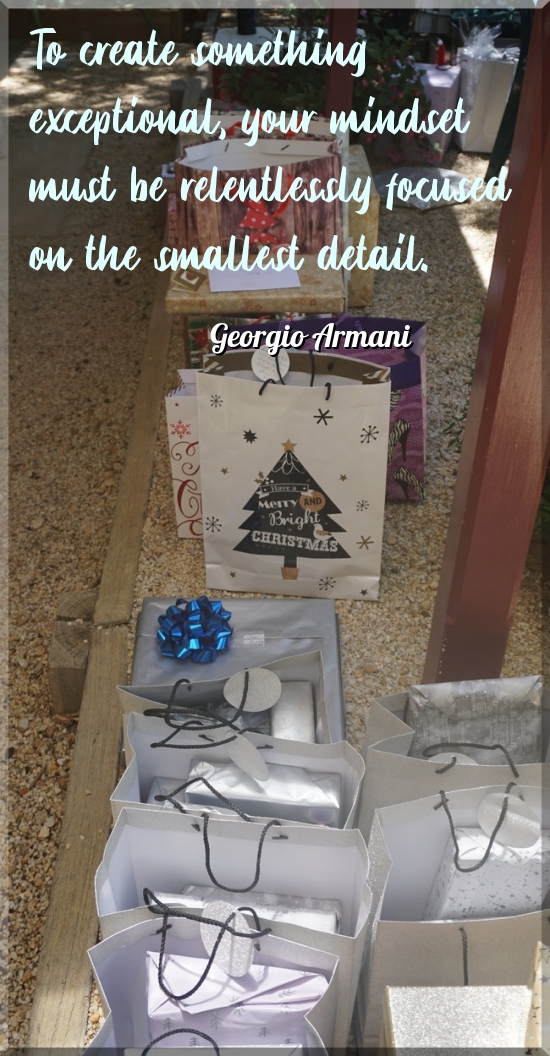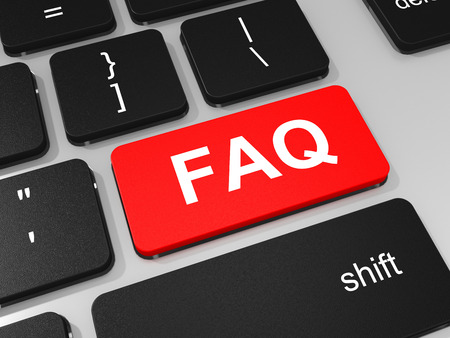TashWord
Tash is a professional writer who loves helping people communicate clearly and effectively.
It’s winter and many of us are in some form of lock down so what better time to catch up on some reading! 
I have just placed an order for some books with Book Depository and discovered they are running a read-a-thon. So in case it inspires you to read, or gives you some motivation to try some different books, I thought I’d share the idea here.
Basically, they are giving some ‘rules’ to guide your reading between 23 and 30 August:
Which rule will you chose for the read-a-thon for winter? I’d love to hear what books you read and what you think of those books, too.
Ahh the irony of people giving advice without the skills!
Helping my daughter, I came across an article giving tips on how to write an ‘extraordinary’ speech for school, but much of it does not make sense. I’m really not sure how a student is meant to improve their speech writing via this article.
Examples like this show the value in having someone else reading your work to ensure it makes sense and meets basic grammar rules. The more skilled the person checking it, the better feedback you will obviously get, but even a less skilled person could point out any confusions.
So lets look at parts of that article and see how it could have been less confusing…
Article text: …appreciated by your teachers, individual understudies…
My comment: do student usually have understudies listening to a speech? I assume they mean ‘fellow students’ or simply ‘classmates’.
Article text: …write the same data in each of the paragraphs that are the relief of this subheading.
My comment: Apart from being boring to read if they actually use the same data in every paragraph, I think the article writer needs to learn that relief means to ease or alleviate stress, pain, discomfort and so on. It is unlikely that a subheading feels anything that needs relieving – although I felt relief to stop reading this article!
Article text: If your subheadings and speech are moving farewell then they can make the Audience bored, otherwise, your speech will be very good.
My comment: I don’t know what this sentence is meant to say! “If your content is moving forward” is what I first thought it should be, but that doesn’t work with making the audience bored. Maybe farewell should be replaced with slowly?
A much smaller issue is the capital A for audience as it is totally unnecessary and visually stood out to me as wrong.
Article text: The first lines … are to speak at certain points so that … everyone becomes insensitive and attracts all the speech. Your first lines are the first impression on your audience.
Comment: This implies that the aim of a school speech is to make people insensitive which is a pretty strange aim – again, a use of vocabulary that is not understood causes big problems in writing. If you aren’t sure of a word, use one you do know – big words are not impressive if used poorly.
As for “attracts all the speech”, I think this means “engages the audience quickly so they listen to all the speech”.
Article text: Between the teachers day speech looking at the Audience is not to be disturbed and you have to control your emotions and to point with your hands so that Audiences are attracted and keep their voice down and down.
Comment so it makes sense: oh my goodness, where do I start with this paragraph?
Well, the above hopefully gave you a giggle at some poorly worded tips! And hopefully reminded you of the importance to checking that your work makes sense and reads as you intend.
The key lessons from this article are
What is the point of promoting something without explaining how to get it?
Due to my connection with Love Santa, I keep an eye on Christmas news around the world. Recently, I went to a site to read about some Christmas movies coming up – it mentioned things like Home Alone and How the Grinch Stole Christmas (one of which is debated to its place as a Christmas movie every year!) This is a news type site with a section on entertainment – it was Australian but I hadn’t been there before.
What struck me though was the lack of basic and critical details. Paraphrasing, the article said “SuperChannel {made up name!} is starting some Christmas movies in November and here’s their full schedule”‘ then listed all the movies for November.
The article had some links to other pages on the site about types of movies and so on, but no link to SuperChannel.
Personally, I have never heard of SuperChannel so I’m pretty confident it’s not a free to air TV channel. So how do I see movies they play? It is within a subscription to an on-demand service? Or maybe its an online channel of some sort?
When writing, for pleasure as well as business really, make sure you give necessary information rather than assume people know it. Even when you know the audience well, be careful to not miss important details.
From the article I mentioned above, I can now tell you when Home Alone will be showing. I have no idea how to find it and watch it, so knowing the timetable is fairly useless. Maybe the writer or site assumes ‘our site members knows SuperChannel’ but what about new members or people coming across the article (as I did) for the first time? What about the members who know the name but can’t recall access details?
Even if your audience does know the basics, where/how to access something you are promoting is critical information to include.
“I use to get jewelry and a print or something they made . It was a nice jester.”
This is a comment I spotted on social media recently in response to a request for some gift ideas. It took me a moment to realise that ‘jester’ was meant to be ‘gesture’, but then it all made sense.
I must admit this is not a pair of words I had thought of as spelling options before, but I now know they can be confused so here are the meanings…
jester [noun]: a person who entertains, especially in medieval times, and often does so through silly behaviours. Also known as a fool, a jester often wears a funny hat with bells hanging from it.
The King laughed as he watched the jester before dinner.
gesture [noun]: a movements of limbs, head or body to express an emotion or thought.
A nod of the head is a gesture of approval.
The key thing I can see that may help you know which word to use is the relationship between jest (to joke or laugh) and jester.
While there is an expression about having a long drink, length is not usually a measure of drinks. So I was surprised to see an ad for 300m of a soft drink in some recent junk mail!
As always, the message is that proof reading is really important – best done by someone else or at a later time as proofing as you write has limitations.
Of course, the person preparing the ad may have written 300ml and something happened at the design or printing stages, but that is why printing proofs also need to be checked carefully.
Do you know what a closed question is?
I’m sure I didn’t learn about open and closed questions until much later, but my children have been learning this in primary school. This is a good thing as it can help them communicate socially as well as within their school work.
Closed questions – elicits a simple response such as “do you like blue or green?” where a one word response answers the question.
Open (or open ended) questions – give scope for more detailed and complex responses such as “why is blue your favourite colour?” or “what do you like about that book?” which require longer answers and can lead to a discussion.
Have you ever heard questions referred to as thin and thick questions instead of open and closed?
The first time I knew of the thin/thick nomenclature was when I viewed some work my daughter had done at school. I know enough about open and closed questions to figure out what was meant by thin and thick so I could interpret the schoolwork very quickly. And I assumed the children had been taught thin/thick instead of open/closed.
Then I read the schoolwork in more detail.
The instructions swap between thick/thin and open/closed questions without any explanation that they are the same concept (and not even in the same order which makes it even harder to correlate the pairs of words). Given that this activity is obviously aimed at teaching children about open/closed questions, surely it would be better to use the same terminology for the one activity.
It’s one thing for me as a professional writer to read these instructions and follow them easily, but something else entirely for a seven year old who is grappling with what these terms mean and how to find examples of each type!
And my daughter said they had been taught about open/closed questions – she figured it out (and I think she did a good job devising relevant questions in the activity) but I’m sure many of her classmates would have struggled if they were left to do this activity just by reading the instructions.
If you start using one term (or set of terms) when writing, then continue using that term throughout.
Even if you explain there are alternatives, stick to one term in your content. For instance, if you are writing about saving money, you may write something like
Contributing to your savings can be done more or less frequently. Contributions, also known as deposits or account credits, will attract interest and thus increase your savings over time. When deciding how much to contribute, you may consider your income, expenses and lifestyle choices.
You may not be writing for children, and your audience may easily figure out your message, but why make it harder to read than necessary? Why risk them not understanding and/or disengaging in your content?
Being consistent makes your writing easier to read and understand, looks more professional and will probably help search engines recognise a keyword in your online writing.
Not all websites have a FAQ page, and not everyone things positively about FAQs, but I think they are worth adding to a business website.
 In very simple terms, it helps people find information about the business and/or products and services available.
In very simple terms, it helps people find information about the business and/or products and services available.
Some of the information just doesn’t fit very well elsewhere on the site and others bit are important enough to justify repeating.
I know when I am looking for specific information, I often go to the FAQ page, and the lack of a FAQ can be really frustrating as it leaves you searching the entire site.
Having a FAQ page
Of course, the FAQ has to be worth visiting or it can undo all the benefits – but we’ll cover what’s in a good FAQ page another time!
*Image courtesy of icreative3d at 123rf
Looking at options for some software, I viewed a few FAQ pages lately (FAQ being Frequently Asked Questions).
Some FAQs are better than others, and some were great – informative and easy to understand.
An FAQ page is full of facts, otherwise what’s the point of having it? But that doesn’t mean you have to make it all staid and boring.
Here are some examples for amusing FAQs I have spotted:
Q: How do I invite someone?
A: The basic invitations are simple SMS messages. Naturally, you have other options to bring your friends here. Try sending them a download link via any other messaging service: email, Facebook, WhatsApp, an actual telegram — you name it.
Q: Will you have ads? Or sell my data? Or steal my beloved and enslave my children?
A: No.
Q: will these faqs ever end?
A: well it always has before!
Q: You didn’t answer my question. How come?
A: Probably because this FAQ was written by a marketing person. Please ask us your question using our contact us form.
A bit of humour and lightness makes the whole page easier to read – and more memorable, too, and every business wants to be remembered.
How can you add some humour to your FAQ page?
*Image courtesy of Frugo at 123rf
I came across this great infographic outlining why children need to be able to read.
As well as being a good message in itself, the infographic also supports Buk Bilong Piknini (a charitable organisation funding books and reading programs for children in Papua New Guinea).
What do you think – why is it important we encourage children to learn to read, and then read some more?
I would also encourage everyone to help ensure our children are literate – whether by donating to groups such as Buk Bilong Pikinini, helping at schools or giving books as gifts, every bit helps.
I frequently help at my children’s school by listening to children (usually not my own!) read and helping them build the skills of sounding out new words, ensuring the words make sense and getting a full understanding of what they are reading.
What have you done to help children (or adults for that matter) learn to read and enjoy reading?
Recent Comments